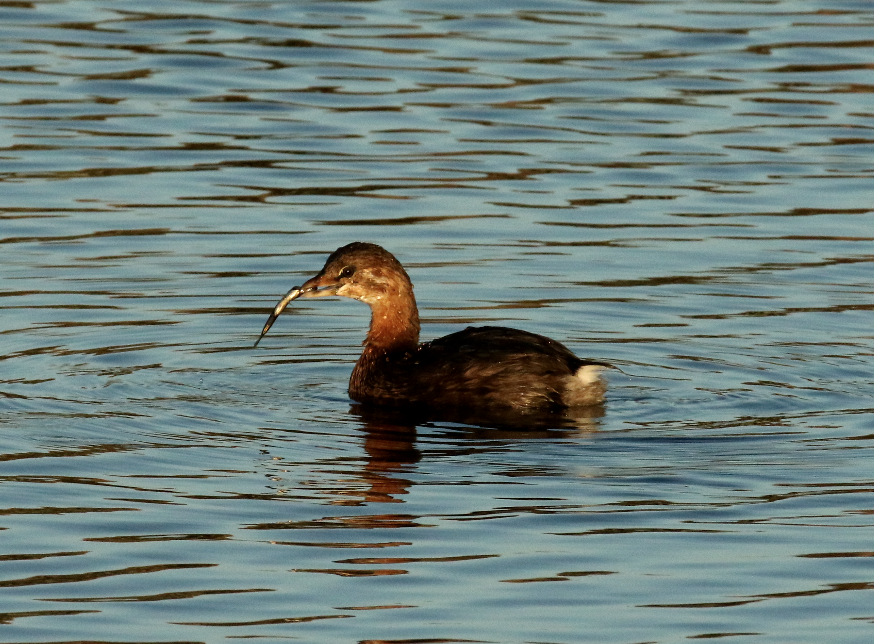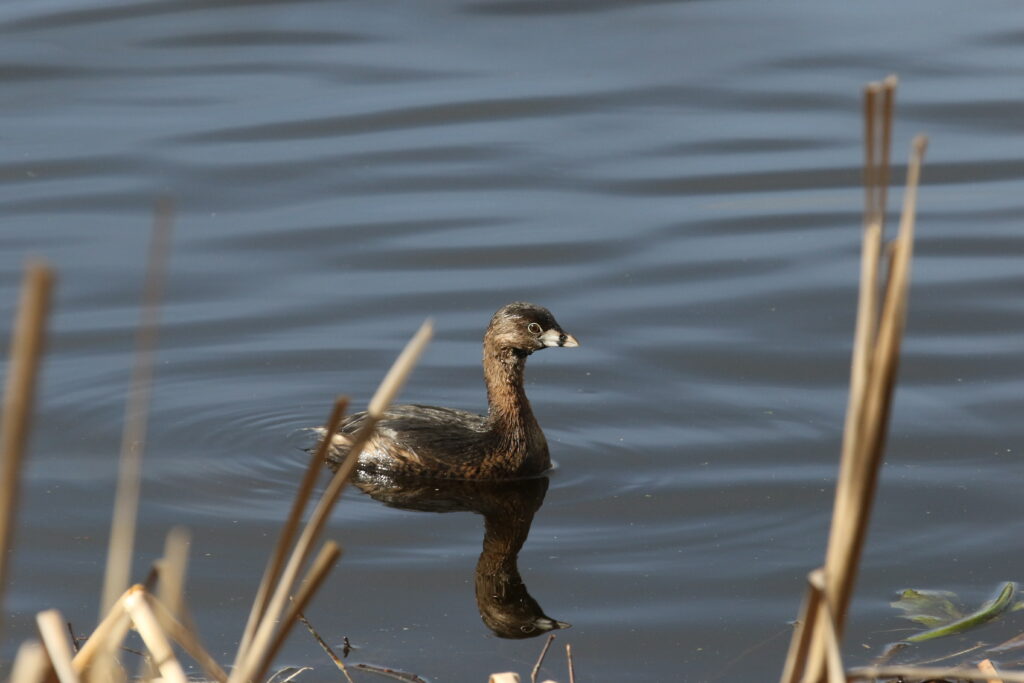Pied-billed Grebe (Podilymbus podiceps)

Pied-billed grebes are small swimming birds. They are varying shades of brown with a slender neck, a round, chunky head and body, and no tail. This species of grebe has a short, thick bill that is yellowish-brown in colour and changes to white with a black band during the breeding season. Juvenile pied-billed grebes have black and white striped faces.
Pied-billed grebes are rarely seen in flight, spending most of their time in fresh to slightly brackish bodies of water. Pied-billed grebes forage for food in open water. They are opportunistic feeders that eat a variety of prey items, primarily crustaceans and small fish that they catch by diving below the surface of the water.

Pied-billed grebes are most common in the southern interior of BC and in the Georgia Depression. Northern breeding populations of pied-billed grebes will migrate to overwinter in coastal or more southern regions of North America. Breeding of pied-billed grebes is widely distributed in the southern half of BC, as well as to the east of the Rocky Mountains towards northern BC. Pied-billed grebes nest at the edges of ponds and lakes on floating platforms attached to vegetation emerging from the water.
Pied-billed grebes have the unique ability to trap water in their feathers which allows them to have high control of their buoyancy. They can stay right at or just below the surface, or sink deeply. This gives them the ability to submerge “crocodile-style” in the water to avoid danger, with just their eyes and nostrils exposed. Can you see the pied-billed grebe using this ability to sink before it dives in the video to the left?
For more information, visit the BC Breeding Bird Atlas and All About Birds by the Cornell Lab.


